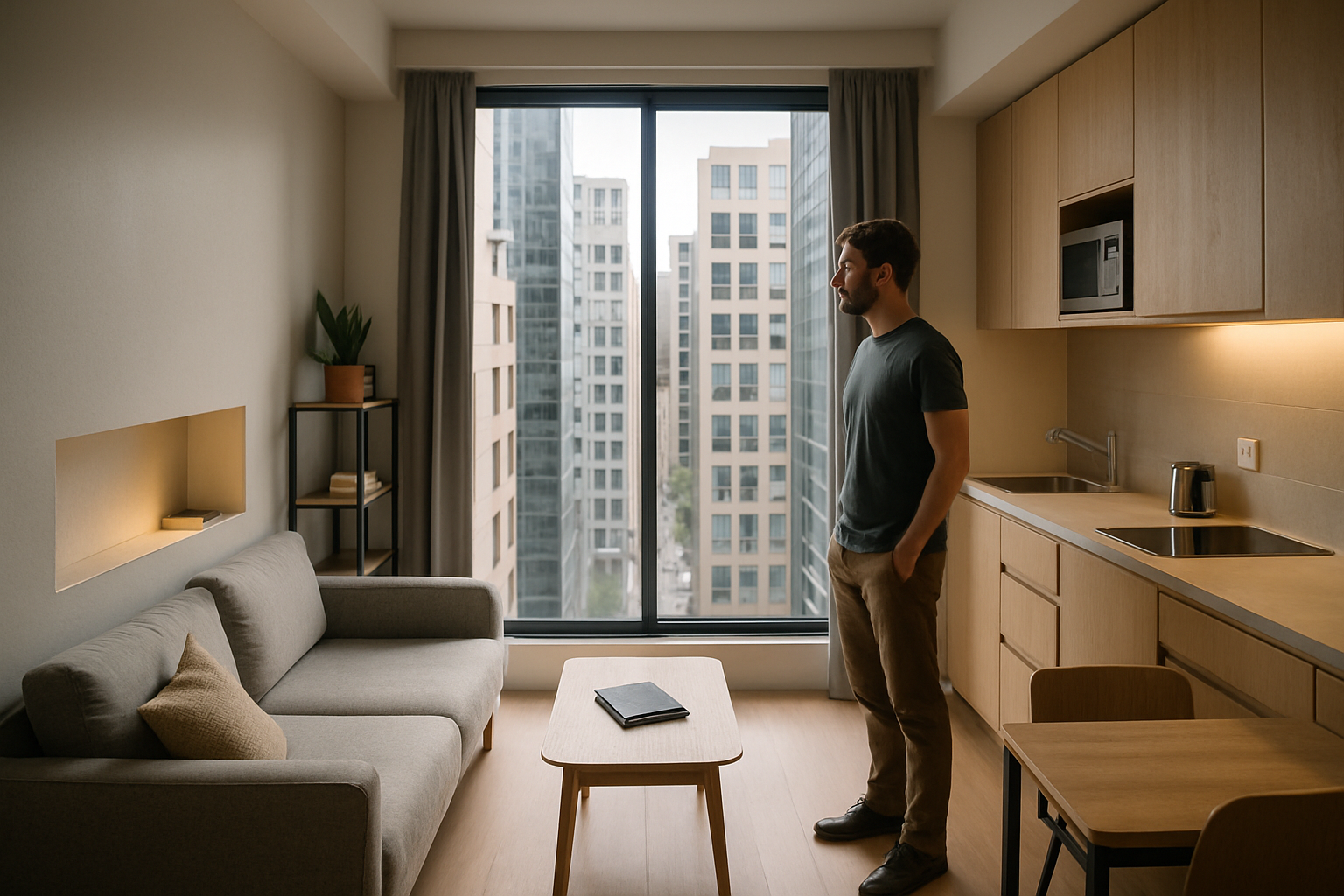Micro-Apartments: The Future of Urban Living?
In a world where urban populations continue to soar and living costs skyrocket, micro-apartments are emerging as a potential solution to the housing crisis. These compact living spaces, typically ranging from 150 to 400 square feet, are redefining the concept of home in densely populated cities. With 68% of the global population projected to live in urban areas by 2050, according to the UN, micro-apartments could reshape real estate markets and urban planning strategies.

The Rise of Micro-Living: A Response to Urban Challenges
Micro-apartments have gained traction in major cities worldwide, from New York to Tokyo, as a response to several interconnected urban challenges. Rapid urbanization, coupled with limited land availability, has led to soaring property prices in city centers. Additionally, changing demographics, including an increase in single-person households and a shift towards minimalism, have created a demand for smaller, more affordable living spaces.
In many metropolises, micro-apartments are filling a crucial gap in the housing market. They provide an entry point for young professionals, students, and others who prioritize location over square footage. By offering a more affordable option in prime urban areas, these compact homes are helping to address issues of gentrification and maintain diverse, vibrant city neighborhoods.
Design Innovations: Making the Most of Limited Space
The success of micro-apartments hinges on innovative design strategies that maximize functionality within a minimal footprint. Architects and interior designers are pushing the boundaries of spatial efficiency, creating living spaces that feel larger than their actual square footage suggests.
Common design features include:
-
Murphy beds that fold into walls
-
Convertible furniture that serves multiple purposes
-
Floor-to-ceiling storage solutions
-
Sliding partitions to create flexible living areas
-
Smart home technology for climate control and lighting
These design elements not only make micro-living possible but can also contribute to a more sustainable lifestyle by reducing energy consumption and promoting minimalism.
Economic Implications for Real Estate Markets
The proliferation of micro-apartments is having a significant impact on real estate markets in urban centers. For developers, these units offer higher potential returns per square foot compared to traditional apartments. In cities with high land costs, micro-apartments allow for more units within a given building footprint, potentially increasing overall profitability.
From an investment perspective, micro-apartments present an interesting opportunity. Their appeal to a specific demographic - often young, mobile professionals - can result in high occupancy rates and steady rental income. However, investors should be aware of potential risks, such as regulatory changes or shifts in market preferences that could affect long-term demand.
Regulatory Challenges and Urban Planning Considerations
As micro-apartments gain popularity, cities are grappling with how to regulate these new housing types. Zoning laws, building codes, and minimum size requirements often need to be revisited to accommodate micro-units. Some cities have embraced the trend, seeing it as a way to increase housing stock and affordability. Others have been more cautious, concerned about the potential for overcrowding or the creation of substandard living conditions.
Urban planners are also considering the broader implications of micro-apartment developments on city infrastructure and services. Higher density living can put pressure on public transportation, utilities, and community spaces. As such, successful integration of micro-apartments into urban fabrics often requires a holistic approach to city planning.
The Social Impact of Micro-Living
While micro-apartments offer a solution to housing shortages, they also raise questions about quality of life and social dynamics in urban settings. Critics argue that extremely small living spaces could negatively impact mental health and social interactions. Proponents, however, suggest that micro-living encourages residents to engage more with their communities, utilizing public spaces and local amenities as extensions of their homes.
The social implications of micro-apartments extend beyond individual residents. These developments can alter neighborhood demographics and potentially contribute to the revitalization of urban areas. However, careful planning is necessary to ensure that micro-apartment projects don’t exacerbate issues of inequality or lead to the displacement of long-term residents.
Future Outlook: Adapting to Changing Urban Needs
As cities continue to evolve, the role of micro-apartments in urban housing markets is likely to grow. The COVID-19 pandemic has accelerated discussions about urban living and the importance of flexible, adaptable spaces. Future micro-apartment designs may incorporate features like dedicated work-from-home areas or enhanced air filtration systems to meet changing resident needs.
Additionally, the concept of micro-living is expanding beyond individual units to encompass entire communities. Some developers are creating micro-apartment complexes with extensive shared amenities, fostering a sense of community and offering residents access to spaces and facilities that wouldn’t be possible within their individual units.
In conclusion, micro-apartments represent a significant shift in urban living paradigms. While they offer a potential solution to housing challenges in densely populated cities, their long-term success will depend on thoughtful design, appropriate regulation, and integration into broader urban planning strategies. As the real estate industry continues to adapt to changing demographics and urban dynamics, micro-apartments may well play a crucial role in shaping the cities of tomorrow.




